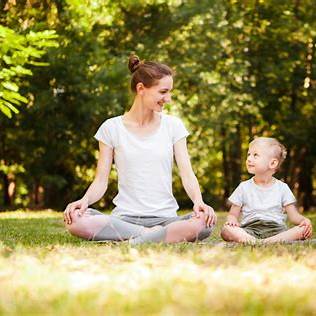Mindfulness—being aware of the present moment with kindness and curiosity—can seem like a big concept for a child. But when introduced in simple, playful ways, it becomes a powerful tool for helping children with ADHD improve focus, regulate emotions, and reduce impulsive behavior.
In this article, we’ll explore how to make mindfulness accessible and fun for children with ADHD.
What Is Mindfulness, and Why Does It Help?
Mindfulness is the practice of noticing what’s happening right now—inside our bodies and around us—without judgment. For children with ADHD, this can help with:
- Improving attention span
- Reducing anxiety and restlessness
- Building awareness of thoughts and emotions
- Increasing patience and self-control
It doesn’t require silence or stillness—just a willingness to explore the moment with openness.
1. Start with Breath Awareness
Breathing is a built-in tool for calming the body. Teach your child to:
- Take slow, deep breaths in through the nose, out through the mouth
- Place a stuffed animal on their belly and watch it rise and fall
- Pretend they are blowing up a balloon or smelling a flower
This anchors their attention and helps them reset in stressful moments.
2. Try “Five Senses” Grounding
Ask your child to pause and notice:
- 5 things they can see
- 4 things they can feel
- 3 things they can hear
- 2 things they can smell
- 1 thing they can taste
This sensory activity brings their mind to the present and is great for calming nerves.
3. Introduce Mindful Movement
Children with ADHD often respond better to movement-based mindfulness:
- Slow stretching or simple yoga poses
- Walking barefoot on grass and noticing the feeling
- Balancing on one foot while breathing deeply
Movement paired with attention helps regulate energy and increase focus.
4. Practice Body Scans
Help your child tune into how their body feels:
- Lie down and guide them to focus on each body part (toes to head)
- Ask: “Can you feel your toes? Are they warm or cold?”
- Keep the tone curious, not demanding
This builds body awareness and helps with relaxation.
5. Use Guided Mindfulness Stories or Apps
Many mindfulness apps and YouTube channels offer child-friendly guided meditations. Look for:
- Short sessions (3–7 minutes)
- Stories involving animals, nature, or adventures
- Gentle music or narration
Some recommended apps include:
- Headspace for Kids
- Smiling Mind
- Moshi Sleep
6. Create a “Mindful Jar” or Glitter Bottle
A simple craft with big impact:
- Fill a jar with water, glitter, and glue
- Shake it and watch the glitter settle slowly
Explain that the glitter is like our thoughts—when we’re upset, they swirl. But if we wait and breathe, everything settles.
7. Practice Gratitude Together
At dinner or bedtime, ask:
- “What was your favorite part of the day?”
- “What’s something nice that happened today?”
Gratitude shifts focus from stress to appreciation and helps build emotional resilience.
8. Use Nature as a Mindfulness Tool
Take a walk and encourage your child to:
- Notice the shapes of clouds
- Feel the texture of a leaf
- Listen for birds or the wind
Being in nature naturally slows the mind and soothes the senses.
9. Keep It Playful and Pressure-Free
Mindfulness is not about perfection or “getting it right.” Focus on:
- Short, regular practice (2–5 minutes is enough)
- Making it fun (use silly voices, favorite toys)
- Encouraging curiosity: “Let’s see what your breath feels like today!”
When mindfulness feels like a game, children are more open to trying it.
10. Model Mindfulness Yourself
Children learn best by watching. You can say:
- “I’m feeling overwhelmed, so I’m taking a breath.”
- “Let’s sit quietly for a moment together.”
Your calm energy helps your child feel secure and shows how to handle emotions constructively.
Final Thought: Small Moments, Big Impact
Mindfulness won’t change everything overnight, but it offers small, steady benefits that grow over time. For children with ADHD, even a few minutes a day can support emotional regulation, increase self-awareness, and create space between impulse and action.
The best part? You can practice it together—and build a calmer, more connected home in the process.
